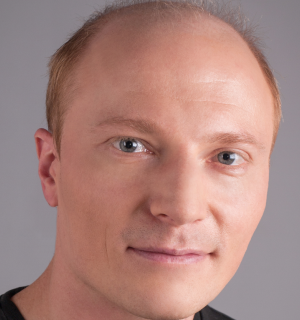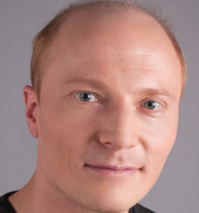Give us an overview to your background?
I am a physicist by training, having studied at the National Research Nuclear University MEPhI (Moscow Engineering Physics Institute) between 1991 and 1997 that has informed my approach to solving complex problems in both industry and business. I have founded a number of start-ups including SMS Traffic between 2000 – 2013, a platform that enables businesses to integrate customers’ and employee’s mobile technologies. The ability for technology to break down barriers between separate parties has been one of the constant traits for my career.
What drew you to blockchain tech?
I started to develop an interest in cryptocurrencies and in particular the underlying blockchain technology in 2014. Rather than focusing on the speculative gains short-term investors were making, I really wanted to see how distributed ledger technology could be applied to mainstream industry infrastructure.
What led you to create the Obyte platform?
Although I was very impressed by the early pioneering blockchains that gained attention (in large part due to the increase in token value), I could see there were considerable flaws and problems that would prevent it being adopted by the mainstream in the future. High energy usage, scalability and existence of a privileged class of miners made me think there had to be a better alternative and this informed the design of Obyte.
What makes DAG so significant?
Directed Acyclic Graph (DAG) enables anyone to add information or data to the ledger. In centralized systems, only one party was allowed to add transactions to the ledger; in blockchains, only a select few - the miners - are allowed to do it; in DAG, everybody is allowed to write to the ledger. DAG also improves speed and throughput: instead of having one single chain of blocks, data can be added to any number of parallel interconnected “lanes”.
Where do you see DLT in five years?
Given all that has happened in the last five years since I became involved in DLT, I am very cautious about making concrete predictions, however we are beginning to see some trends that I think will become more accepted by the mainstream. These include, greater acceptance of decentralisation of databases and use of DLT for data management (instead of siloes like we currently have). I also envisage greater use of DLT for fiat currency transfers, currently it isn’t accepted by many outlets, the ability to bypass banks and mainstream infrastructure could enable developing markets to make great leaps forward and unleash huge economic and technological development.
What are the main challenges to mainstream adoption?
People are understandably conservative in adopting new technologies, particularly those related to their private wealth. How DLT companies foster a culture of trust and assurance with the people and companies they seek to serve will be fundamental in determining mainstream adoption. Creating that level of assurance takes time and constant education so that people are better informed.
What are the industries you envisage as being most likely to be disrupted by DLT?
Currently Obyte has identified the following four areas to focus on that are the most amenable to using DLT: P2P betting, Tokenization of assets, IOT and charitable giving. We have a number of case studies that include companies for peer-to-peer sports betting, Venezuelan universities looking for student sponsorship as well as a donation scheme to match donors, producers and receivers (also in Venezuela). We see this expanding over the course of the next five years, but we should stress that any number of industries ranging from: Financial Services, Data management, Entertainment, Legal services, logistics, to name but a few could be disrupted by the use of DLT.
What made you decide on the name Obyte?
Yes we recently rebranded from Byteball to Obyte. When we renamed, many people wondered what O stands for. While it is true that it replaces the former "ball", I also want to make it clear that O stands for Open. It speaks about the core values of the platform: open access to the ledger, not encumbered by miners or other intermediaries, which simply do not exist here in a DAG. We are going to have more Onames for the products built on top of the platform going forward.
Interview by Finyear.
I am a physicist by training, having studied at the National Research Nuclear University MEPhI (Moscow Engineering Physics Institute) between 1991 and 1997 that has informed my approach to solving complex problems in both industry and business. I have founded a number of start-ups including SMS Traffic between 2000 – 2013, a platform that enables businesses to integrate customers’ and employee’s mobile technologies. The ability for technology to break down barriers between separate parties has been one of the constant traits for my career.
What drew you to blockchain tech?
I started to develop an interest in cryptocurrencies and in particular the underlying blockchain technology in 2014. Rather than focusing on the speculative gains short-term investors were making, I really wanted to see how distributed ledger technology could be applied to mainstream industry infrastructure.
What led you to create the Obyte platform?
Although I was very impressed by the early pioneering blockchains that gained attention (in large part due to the increase in token value), I could see there were considerable flaws and problems that would prevent it being adopted by the mainstream in the future. High energy usage, scalability and existence of a privileged class of miners made me think there had to be a better alternative and this informed the design of Obyte.
What makes DAG so significant?
Directed Acyclic Graph (DAG) enables anyone to add information or data to the ledger. In centralized systems, only one party was allowed to add transactions to the ledger; in blockchains, only a select few - the miners - are allowed to do it; in DAG, everybody is allowed to write to the ledger. DAG also improves speed and throughput: instead of having one single chain of blocks, data can be added to any number of parallel interconnected “lanes”.
Where do you see DLT in five years?
Given all that has happened in the last five years since I became involved in DLT, I am very cautious about making concrete predictions, however we are beginning to see some trends that I think will become more accepted by the mainstream. These include, greater acceptance of decentralisation of databases and use of DLT for data management (instead of siloes like we currently have). I also envisage greater use of DLT for fiat currency transfers, currently it isn’t accepted by many outlets, the ability to bypass banks and mainstream infrastructure could enable developing markets to make great leaps forward and unleash huge economic and technological development.
What are the main challenges to mainstream adoption?
People are understandably conservative in adopting new technologies, particularly those related to their private wealth. How DLT companies foster a culture of trust and assurance with the people and companies they seek to serve will be fundamental in determining mainstream adoption. Creating that level of assurance takes time and constant education so that people are better informed.
What are the industries you envisage as being most likely to be disrupted by DLT?
Currently Obyte has identified the following four areas to focus on that are the most amenable to using DLT: P2P betting, Tokenization of assets, IOT and charitable giving. We have a number of case studies that include companies for peer-to-peer sports betting, Venezuelan universities looking for student sponsorship as well as a donation scheme to match donors, producers and receivers (also in Venezuela). We see this expanding over the course of the next five years, but we should stress that any number of industries ranging from: Financial Services, Data management, Entertainment, Legal services, logistics, to name but a few could be disrupted by the use of DLT.
What made you decide on the name Obyte?
Yes we recently rebranded from Byteball to Obyte. When we renamed, many people wondered what O stands for. While it is true that it replaces the former "ball", I also want to make it clear that O stands for Open. It speaks about the core values of the platform: open access to the ledger, not encumbered by miners or other intermediaries, which simply do not exist here in a DAG. We are going to have more Onames for the products built on top of the platform going forward.
Interview by Finyear.
Finyear & Chaineum
Lisez gratuitement le quotidien Finyear & sa newsletter quotidienne.
Recevez chaque matin par mail la newsletter Finyear, une sélection quotidienne des meilleures infos et expertises en finance digitale, corporate finance & crypto finance.
Read for free The daily newspaper Finyear & its daily newsletter.
Receive the Finyear's newsletter every morning by email, a daily snapshot of the best news and expertise in digital finance, corporate finance & crypto finance.
----------------
Chaineum - Conseil haut de bilan & stratégie blockchain
Fondée en 2015, Chaineum est un cabinet de conseil en opérations de haut de bilan offrant une expertise de premier plan en matière d’ICOs et STOs, avec une vision stratégique orientée tant vers le métier de ses clients que sur la technologie blockchain. A ce titre, Chaineum a participé à la mise en œuvre de bonnes pratiques dans le secteur (ICO Charter, Security Token Network).
Besançon - Paris + réseau international de partenaires.
Recevez chaque matin par mail la newsletter Finyear, une sélection quotidienne des meilleures infos et expertises en finance digitale, corporate finance & crypto finance.
Read for free The daily newspaper Finyear & its daily newsletter.
Receive the Finyear's newsletter every morning by email, a daily snapshot of the best news and expertise in digital finance, corporate finance & crypto finance.
----------------
Chaineum - Conseil haut de bilan & stratégie blockchain
Fondée en 2015, Chaineum est un cabinet de conseil en opérations de haut de bilan offrant une expertise de premier plan en matière d’ICOs et STOs, avec une vision stratégique orientée tant vers le métier de ses clients que sur la technologie blockchain. A ce titre, Chaineum a participé à la mise en œuvre de bonnes pratiques dans le secteur (ICO Charter, Security Token Network).
Besançon - Paris + réseau international de partenaires.
Autres articles
-
La fintech française, Powens officialise son rapprochement avec l'Espagnole Unnax. Objectif : devenir le leader de l'open finance et de la finance embarquée en Europe
-
JuneX, le nouveau fonds "evergreen" pour accompagner "autrement"
-
Pomelo annonce une Série A à 35 millions de dollars menée par Vy Capital
-
Louis Vuitton dévoile un nouveau Collectible exclusif pour sa Communauté VIA
-
Nomination | Paymium confie sa stratégie à Alexandre Stachtchenko
















